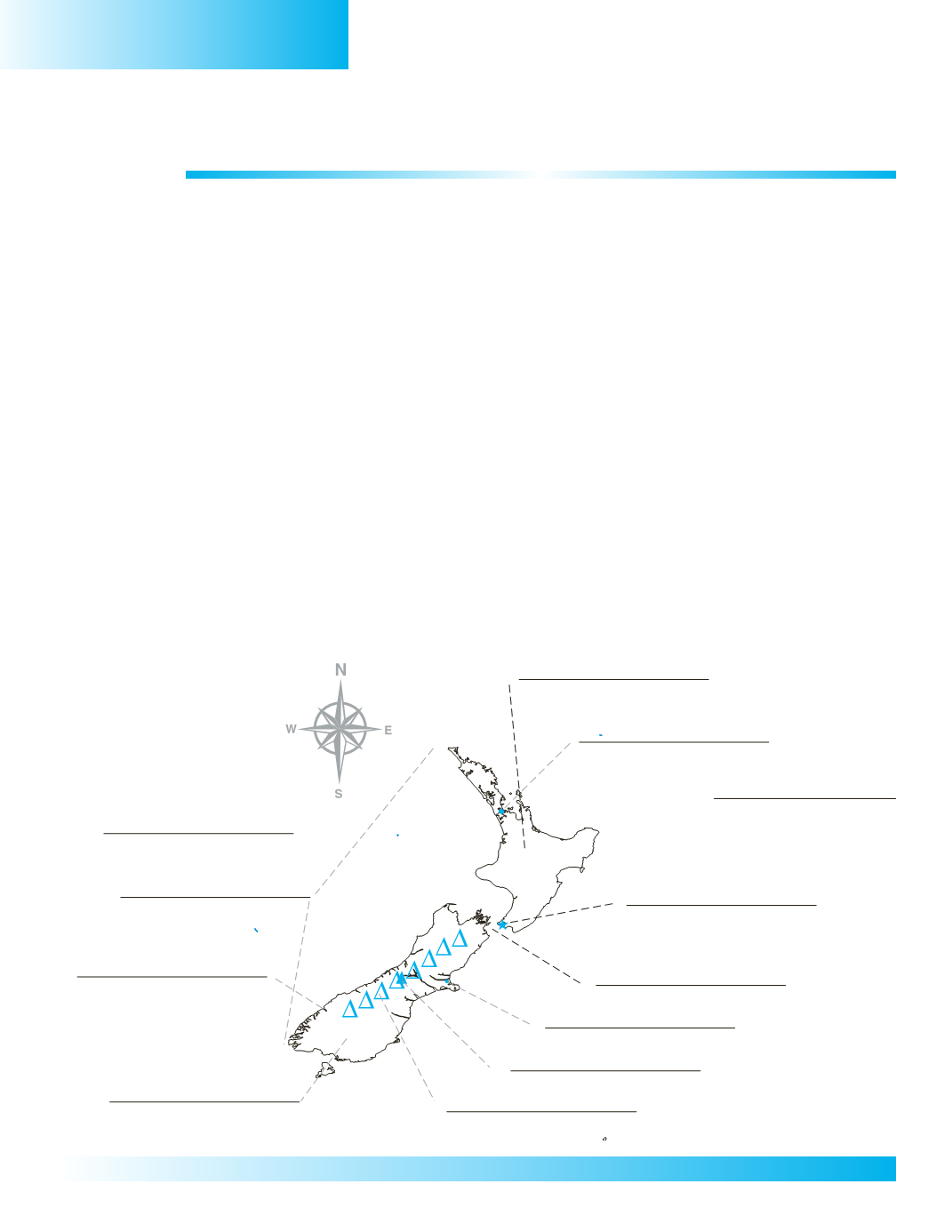
PENNSVALLEY
68
COPYRIGHT
New Zealand
Lesson 35: (Cont.)
New Zealand
ACTIVITY 2:
From the Picture Symbols of Products
BLM
file, cut out the symbols that are
boldfaced
in the
paragraphs below. Paste these symbols on amap of NewZealand
(BLM)
.
TheNewZealanders enjoy a good standard of living.Much of NewZealand’s economy is tied into
its natural resources. Its primary industries are centered on agriculture. One half (1/2) of the land is
used for farming and one fourth (1/4) of the land is in forests.Themild climate and rich farmlands are
suitable for
sheep farming
.Over 40million sheep roamNewZealand’s countryside.
Dairy farming
is
also a large industry.New Zealand is theworld’s second largest producer of
kiwi fruit
.
Because of the ruggedmountains, transportation systems are better developed along the coastal
areasof NewZealand.However, themountainshave created fastmoving riverswhicharegood for the
production of
hydroelectric power
. Most energy needs are supplied by hydroelectric power. New
Zealand has also harnessed
geothermal energy
from volcano zones on the North Island. Coal is
mined for generating electricity as well.
Natural gas
is becoming an important fuel. New Zealand
produces oil from its oil reserves.
The
processingof food, fishandmeat
(beef and lamb) arebig secondary industries.For its size,
New Zealand is the one of world’s largest exporters of butter, lamb, and wool.Many
textile
products
are made from wool. The forest industry supplies
wood
and
paper products
. Other manufacturing
industries are growing with an emphasis on high-tech,
electronic equipment
. Building
farm
machinery
also is an important industry.
The largest tertiary industry inNew Zealand is
tourism
. Despite its remote location, the country’s
mild climate, spectacular scenery, and clean air are inviting to people all over theworld.
D
E
F
G
H
K
I
L
A
B
C
J
MAPOFNEW ZEALAND


